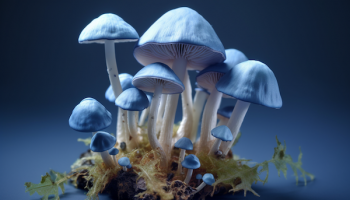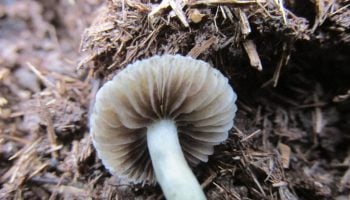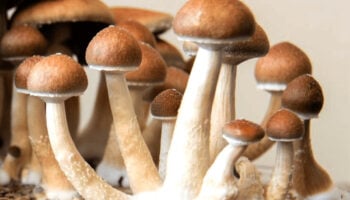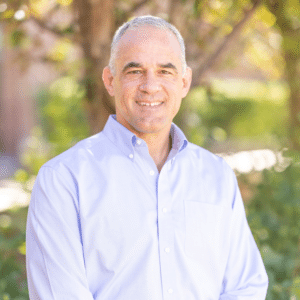For years, I was on a constant quest for happiness.
I spent every single hour, day, and week searching for ways to feel good and remain happy. I had an unhealthy obsession with what we like to call “positive” ways of thinking, hence deliberately avoiding sad thoughts, feelings, memories, and even situations that could potentially elicit any forms of sorrow and despair. For years, I worked incredibly hard to drift away from the younger version of myself – the one that was accepting of her susceptibility to emotions, and, more important, the one who embraced and had faith in the darker corners of her mind.
The more I intended to suppress these so called “negative” emotions, the more resilient they became. The more I forced myself (and even worse, the people around me) to suppress this vital element of my psychological well-being, the more frustrated and unhappy I found myself to be. Perhaps it was for this very obsession with happiness that I waited for so long before I embarked on my own psychedelic journey. To be frank, I felt intimidated by even the slightest possibility of melancholy, regret, and worst of all, radical changes in the way I perceive reality.
‘Truffling’ your way out of prohibition
I should have noted by now that throughout my teenage years and adult life, I have been fascinated by psychedelic music, culture, and all kinds of mind-altering substances. While my recent work in the drug policy reform movement has led me to know, appreciate, and even advocate for the practical uses of psychedelic substances in society, I am also a frequent user and (an unapologetic) admirer of cannabis, alcoholic beverages, and empathogens, as well as a few types of stimulants.
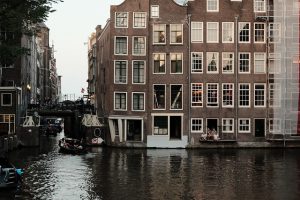
After having lived for five years in the Netherlands, the time finally arrived for me to find out what the fuss was all about with psilocybin truffles. Also known as fungi sclerotia, or by its commercial name “Philosopher’s stones,” psilocybin truffles began populating Dutch smartshops shortly after the preparation and sale of (dried) psilocybin mushrooms were criminalised in 2008. Biologically speaking, sclerotia are formed due to the survival mechanisms of a grown fungus. When a fungus fails to secure enough nutrition to become a mushroom, it simply hardens and turns itself into a compact food-carrying mass which we now refer to as truffles.
After all, the emergence of psilocybin truffles in legally registered Dutch smartshops can be seen as a balloon effect (a concept used by drug policy wonks to discuss what happens when attempts to cut drug production in one sector simply trigger production elsewhere) arising from prohibition in general, and from the nationwide ban on psilocybin mushrooms in particular. Thankfully, the effects of truffles are nearly analogous to those of the “magic mushrooms” with which most of us are familiar. Thus, for my partner and me, both of whom were psychedelic novices at the time, there was clearly no excuse to wait any longer. As psychonauts who reside in one of the most drug-friendly countries on the planet, why take these legal loopholes for granted?
Set and setting
So there we were, waking up on the third day of our rainy vacation in the south of the Netherlands – our minds and bodies hungry for novelty. Approximately two hours after indulging in an exceptionally light brunch, each of us ingested 10 grams of psilocybin truffles which I had ground into paste for the sake of our taste buds.
“And now we wait,” I said shortly after swallowing the last bit of my portion of truffle paste. Just like with other potent and long-lasting psychoactive substances, I immediately used this “waiting period” to turn our trip setting into perfection – from clearing up the salon table, to fine-tuning our playlist, to making sure that the most essential items such as drinking water and blankets were within arm’s reach. Having the whole 200-square-meter house to ourselves, with convenient access to food, warm baths, and a beautiful private garden, we certainly had nothing to complain or worry about. We could simply enjoy the ride.
Bon voyage
About forty minutes later, I found myself slowly drifting away from my usual state of consciousness. I began to feel the typically nauseating effect of digesting truffles, but somehow refrained from moaning about it. I could feel that something huge yet unknown was about to happen, just like a nervous puppy hopping into a car for her first trip to the dog park.
Little did I know about what kind of things I would see, sense, or feel throughout the following six or seven hours. But after a few anxious minutes of self-contemplation, the soothing voice of Alan Watts gradually fused into our playlist, alleviating my concerns through his coincidental assessment on my fear of the unknown:
“I have realized that the past and future are real illusions, that they exist in the present, which is what there is and all there is…”
As Watts’ voice dissolved into the bass-filled music, I could feel a great range of emotions spreading and releasing somewhat fiery sensations throughout my entire body. Regardless of how inflammatory or dreadful they were, I remained patient, calm, and silent. Unlike in other situations, I created a distance between myself and my default tendency to seek comfort from my beloved partner, holding on to my inner power to stop worrying about what would come next, and to truly appreciate and live in the present.
For who knows how long, there was only me, sitting there with all my emotional baggage, ready for departure to who knows where.
Every little thing has something to say – if you let it
One hour and a half after ingestion, I began to notice the growing contrast among different colors around meto the soft lo-fi music playing in the background. As we switched to the Pulp Fiction soundtrack, I thought to myself, “bring it on, reality; it’s time for a show.”
Despite some lightheadedness, I decided to walk around the house to get a better and even more colorful outlook on this Instagram-filtered world. As I gazed upon the wide garden-facing windows, I was candidly greeted by all the trees and flowers with their glaring facial features. “Am I supposed to feel scared or intimidated by this?” I asked myself, two seconds prior to bursting into inexplicable laughter. There’s a thin line between pain and pleasure, after all. Perhaps, by giving in to (and not escaping) this slight psychological discomfort, I managed to turn the tide for my own good.
I went back to the living room to reconnect with my partner, suddenly reminded of the sacred harm reductionist principle to take good care of your trip buddy. By that time (more or less two or three hours after ingestion), we were generally having a good time, respectively yet equally fascinated by all the visual effects of psilocybin truffles. Each object – no matter how useful or redundant, either alive or inanimate – had something to say, as long as we let it.
(Not) A bad trip?
I know, psychedelic first-timers are probably supposed to keep their heads down and stick to one substance in order to stay safe. Nonetheless, four hours had gone by since we savored our truffles. As we became more comfortable with our version of amplified reality, we decided to add cannabis to the equation.
It was a total body-and-mind relief which turned out to be a mere break from another thrilling journey ahead of us.
For the next hour or two, I curled up on the couch, staring blankly at the grey sky outside, getting ready for my inward adventure. So there they were: all the bitter-sweet memories from my early teenage years, swaying back and forth, fighting for my attention, my feelings fluctuating like my body temperature. But strangely enough, I persisted – and instead of running away from these memories, I paid a visit to each of them with an open and curious mind, saying hello and goodbye to those whom I had lost or forgotten, offering my virtual forgiveness to those who had broken my heart, and sincere apologies to those whose hearts I had broken. Instead of attempting to marginalize these emotions, I embraced them. Similar to the animated movie Inside Out, it felt as if I was browsing through my own seemingly infinite library of memories, in which every item was like a globe filled with stories, blurry pictures, and a unique dose of mixed sentiments. There were emotional roller coasters placed all over, each of which was powered by several different memory globes, allowing me to drown myself in a bizarre combination of fear, distress, and amazement.
In fact, I appeared so deeply engrossed in this psychological theme park that my partner started to worry that I was having a bad trip. Indeed, it was overwhelming. But it was far from (what we inaccurately perceive as) a bad trip. Rather, it simply resembled that exciting backpacking trip you insist on taking despite stark warning from your parents. It’s long, strenuous, and exhilarating; but in the end, you’re grateful that you decided to embark, and you’re finally looking forward to going back home.
I shook my head a bit and decided to lie down, performing some breathing exercises to gradually find my way out of the boundless library of memories, slowly fixing the broken bridge between myself and my one and only trip buddy, my other half.
“It’s time for a nice warm bath,” he whispered.
Reflection
At the end of the day, I realised that it was me all along. The truffles merely functioned as a kind of amplifier giving voice to the voiceless. Witnessing interactions between the objects seeming to move around me – breathing sofas, dancing lights, frowning succulents – was truly a humbling yet empowering experience. Nevertheless, this visual part of the experience was neither as profound nor impactful as the ways I embraced and ultimately came to terms with my deepest thoughts and emotions. No matter how remote or fragile they were, no matter how vibrant or bleak they seemed, they were all mine.
The overall trip therefore reveals so much about my longstanding denial of my own emotional capacity and vulnerability, and even more so, about my addiction to the pursuit of happiness. As illustrated by the biological mechanism that spawned the truffle, perhaps Nietzsche was somewhat right:, that which does not kill us, truly does make us stronger. By dealing with the troubles we encounter in life in the same way we face challenging emotions during a psychedelic trip, we allow ourselves to learn and grow, and more profoundly so, to appreciate reality as beautifully capricious as it is.
Regardless of how gentle or profound my trip appears to be, the most fundamental lesson prevails, that is, as Edith Wharton tells us, “if only we’d stop trying to be happy, we could have a pretty good time.”

